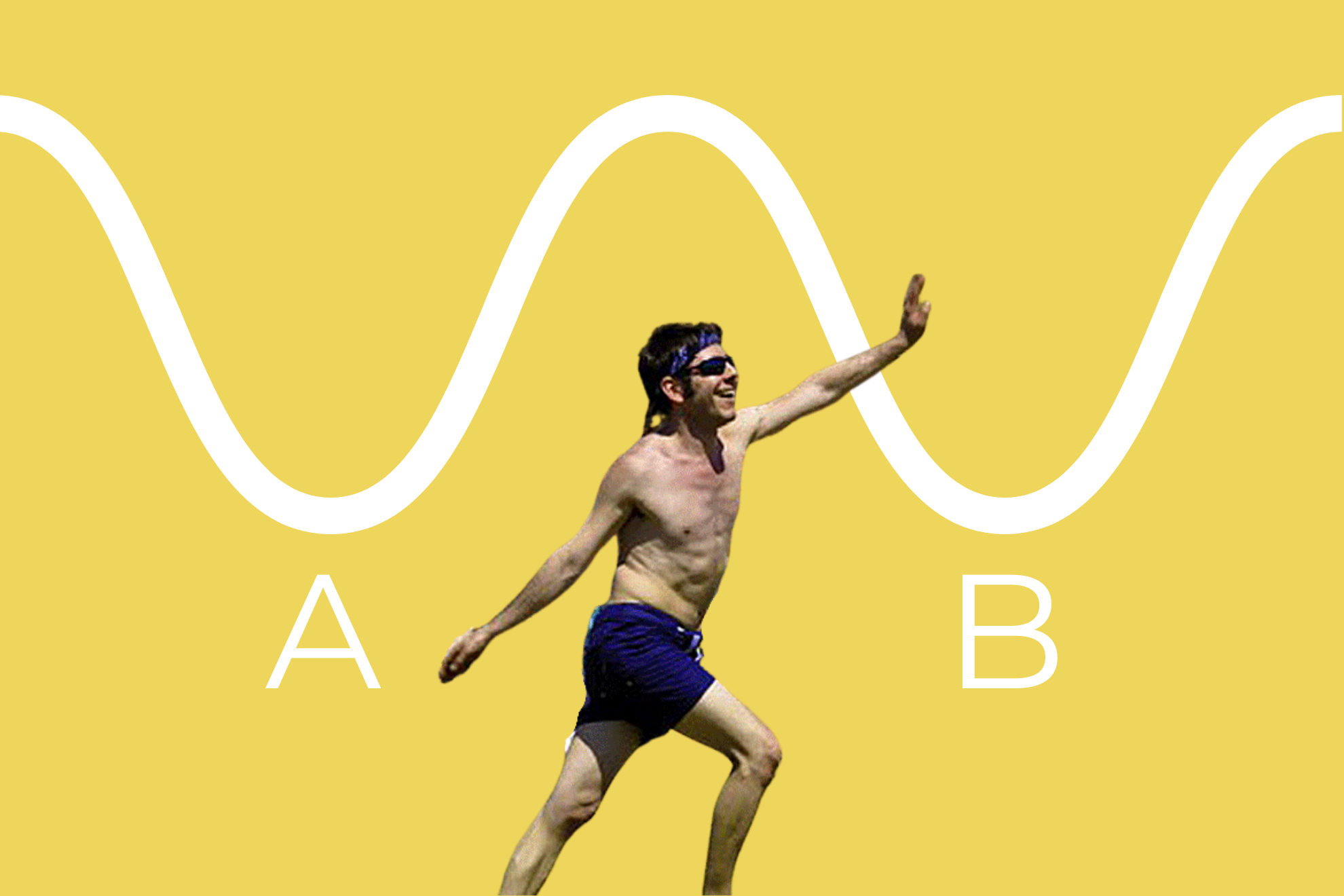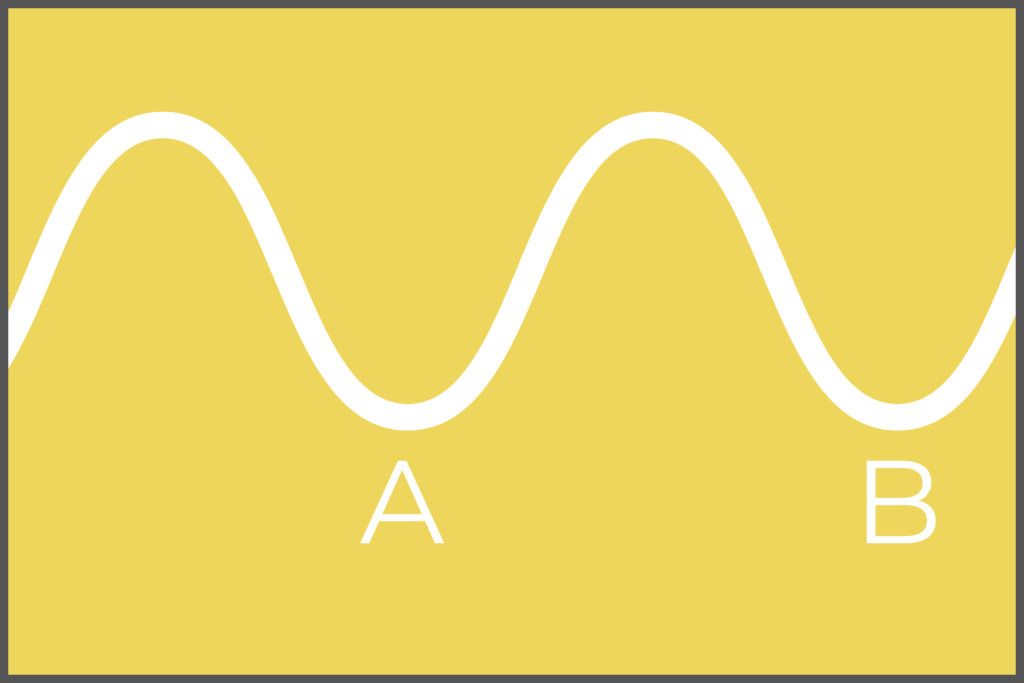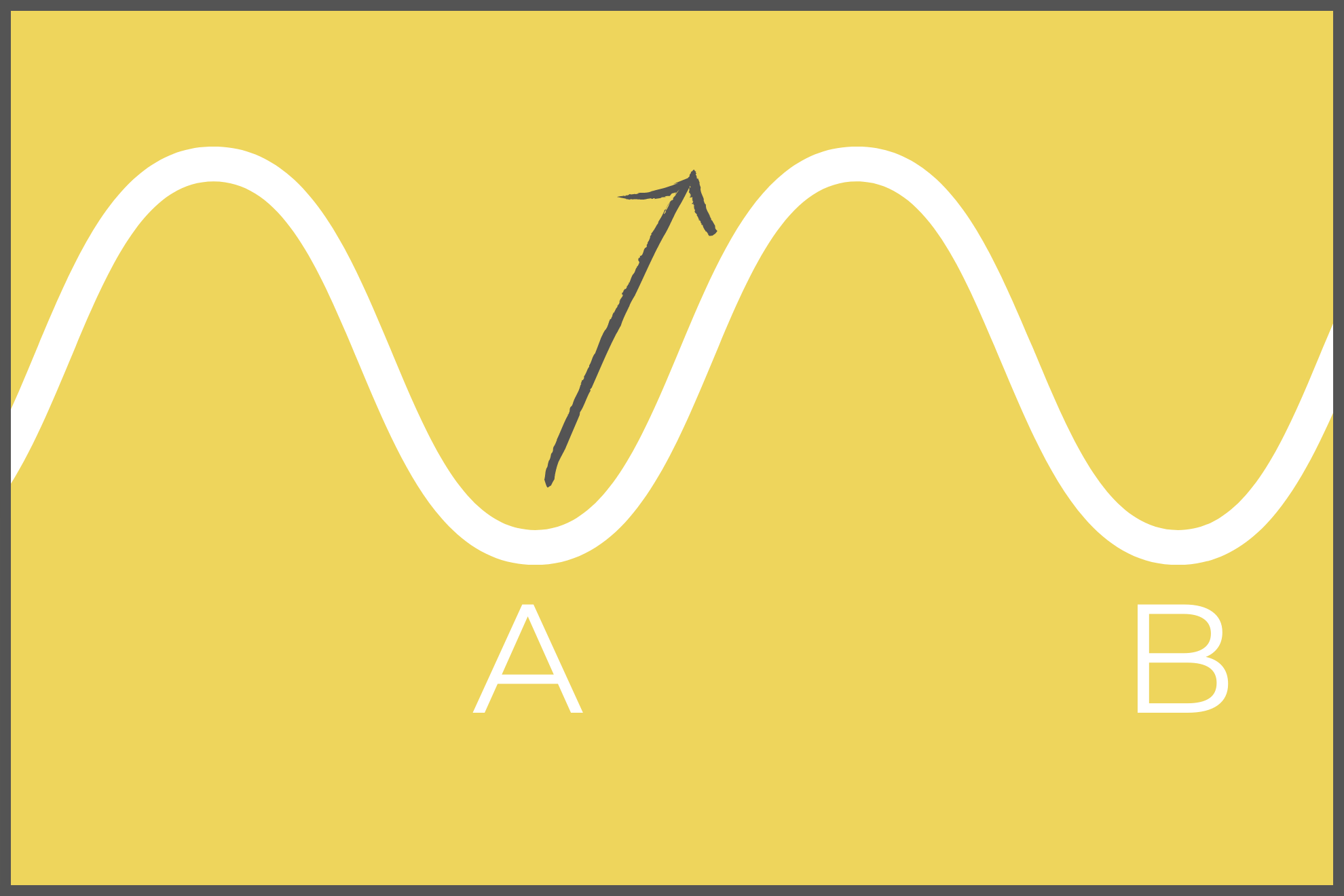Leadership vs the spectacular dancing man

Okay, this is a bit left field… but let’s try something new…
This is a crash course in leadership and change through the lens of complex systems dynamics.
First, watch this (hilarious) video – please skip to 1:15
A very funny video, I’m sure you’ll agree! But there’s something really fantastic about this video, and that is how it plainly reveals how the push/pull forces in complex system dynamics allow change to happen. We can apply these learnings to change and transition in organisations, and fundamentally shift how we view roles of leadership.
Have a look at this waveform pattern below:

In terms of complex systems dynamics, A and B might be considered different phases, where A might be described as “We don’t dance in the field”, and B described as “We dance in the field”. While most people at the beginning of the video are sitting or wandering around, there’s only one person dancing. It appears that, if we were to see this field as a system of people, the current phase of the system is in A: “We don’t dance in the field”. That is the unspoken but accepted norm here. Yet, the dancing man is acting in B: “We dance here”. He’s clearly breaking the norm. That’s partly why it’s so funny (of course, helped in no small part by an insane dancing style). It’s also slightly uncomfortable; slightly tense, as it’s so unusual (as evidenced by someone actually videoing the dancing; there are also other videos of this same event taken by other random people at this exact time).
If the norm in your office was to wear suit and tie, and your boss walked in during the middle of a workday, wearing thongs, shorts and a pink hat, it would be unusual – it would be breaking a norm.
The dancing man is breaking a norm, and actively trying to create a systemic phase shift – by coaxing people to come and dance with him. In this sense, the dancing man is a leader trying to exert change. He is prepared to be the “weird one”, sitting with all of that tension of pushing against an unspoken norm, and dancing through it all, in the name of fun.
Imagine this scenario: You’re a leader in an organisation, and the unspoken norm for a decade has been to work overtime, usually by at least two hours. Employees often work until 10pm at night, and even on weekends. In an effort to reduce the rampant and increasing burnout and disengagement of your employees and fellow leaders, you, as a leader, are trying to influence a fundamental change in the norm of work hours. You announce that, in the interests of wellbeing, you’d like employees to leave at 5pm each workday, and to turn OFF emails and other work correspondence when out of business hours, including weekends. You also insist upon modelling this change yourself.
For the first week, you hold to your word, closing the laptop at 4.55pm and walking out of the office at 5pm. You feel the tension in the office as you walk past employees and peers, realising that you’re breaking a norm by leaving at 5 on the dot. You also perceive that some people in the organisation may be judging you, as being “lazy” or “slacking off” in some way. You’re experiencing being in a different phase to everyone else: You’re trying to be in phase B, while everyone else is in phase A, “Work long hours to show how dedicated you are to this role and company”. Now, back to the dancing man…
Notice what happens when the second person joins the first in the weird dance fest. People attend more to the event suddenly – it becomes more interesting for people. It’s still awkward and tense, but a little less so. Soon, another person joins. There’s even less tension; the spectacle becomes even funnier. There seems to be the sense from onlookers that “actually, that looks really fun! I wouldn’t mind joining in…”. And yet, they don’t.

The joining dancers are shifting the accepted norm, or phase. They’re moving UP the waveform, indicated by the arrow. Back to our office example, this might be akin to a middle manager following your lead, and also opting to close the laptop and follow you out at 5pm in the second week of the stated “change”. This doesn’t yet lead to widespread systemic change in the office norm, but things are close now. You even get the sense that other workers are thinking “Oh. Maybe I could do that as well, and actually get to see my partner and kids before 6pm…”.
Notice when the widespread change occurs in the dancing scenario. Did you see? A couple of women get up to dance. Then suddenly, EVERYONE flocks in.
This is a pivotal moment. This is the tipping point allowing for systemic change to occur. Before this, it was just a bunch of men dancing like maniacs in a field. But, what these women joining did was to move the situation for everyone else from “I’d like to dance, as it looks fun, but it’d be weird to join them, as they kinda look like a bunch of creepy half naked dudes” to “dancing in a field is fun. Let’s go!”. Suddenly, the stampede of people happens, and the system has enacted a complete phase shift to B: We dance in the field – even to the point where it’s “weird” to be sitting nearby the dancers, and not dancing!
I’ll leave it to you to imagine what might lead to the tipping point in our organisation example. Maybe it’s another well-respected leader following your example. Maybe it occurs when more than a third of the employees follow suit. Who knows?
The point of all this is that change is challenging, and requires smart leadership. A recognition of system dynamics can help comprehend what’s happening at each moment in the change process. This of course isn’t limited to organisational dynamics, but to every scenario where a system and norms occur: within the family home, within social circles, in a sports team or match, selling goods to customers. Trying to shift a norm from A to B is challenging, and you will feel tension, resistance, and often outright conflict when you try to influence a change.
Brave and persistent leadership is essential. But key followers are just as important, along with consistently communicating or expressing the reasons for change. A tipping point may be random, or it may be predictable, depending on the situation. The point then?
Dance in a field and keep dancing. ‘Cos it’s fun.
Acknowledgements: All credit to Professor Michael Cavanagh at Sydney University for delivering this content as part of the Masters of Coaching Psychology.
FURTHER RESOURCES
SERVICES
TMR Coach, our coaching service designed to provide clarity and perspective for leaders, teams and businesses. Support your people to lead, perform, think well, feel confident and make great decisions.
Our workshop Navigating Change explores the fundamental skills required to mentally adapt to change. Bring your change challenge to this workshop and we will guide you through evidence-based psychological knowledge and transition skills.
READING
Navigating change, The Mind Room [Blog article]
Mastering transition, The Mind Room [Blog article]





